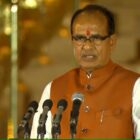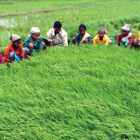Using dressed up data and wrong farming economics, sycophants — in the guise of economists — are distorting the reality around the farm sector.
The listening public has reached an affliction point vis-à-vis comments from ‘sarkari’ economists commenting on farmer issues. When someone make absolutely callous statements that the farmers’ agitation is political and justifies it by citing ‘declining’ numbers of farmer suicides and rising farmer prosperity (‘Just why are farmers rioting?’ by Surjit Bhalla, IE, June 10), one cannot but respond. The decline in farmer suicides is a classic case of selectively torturing data even when the same data proves that farmer suicides increased by 42 per cent in 2015.
After 2014, farmer suicides are enumerated separately from those of agriculture labour. Hence the disparity in suicide data. Many states like Jharkhand, Chhattisgarh, West Bengal and Odisha have even refused to record farmer suicides and under-report. Farmer suicide data remains unreliable; for example, land is normally registered in the name of men, so when women farmers commit suicide, they do not get counted.
It is a dark satire to tell a farmer that the Minimum Support Price (MSP), CPI and WPI changes reflect the doubling of farmer incomes and that farmer suicides are declining. The trigger for the recent farm agitation is the depressed farm gate price that a government declaration of a higher MSP does not enhance. MSP is declared for some crops but over two-thirds of all such crops are selling below MSP or far lower than previous years. That is what matters on the ground.
Over 80 per cent of farm produce is not purchased under MSP. Even vegetable prices are about half. Additionally, though the BJP’s election manifesto promised the crop production cost plus 50 per cent pricing formula from the M.S. Swaminathan report, the government quietly filed an affidavit in the Supreme Court, stating that the promise cannot be implemented. Farmers are losing hope and faith in this government, just as they did with earlier governments that consistently broke promises.
In Maharashtra last year, farmers were compelled to sell milk for as low as ₹16/litre, compared to the average purchase price of ₹35/litre in many other states. Most farmers keep cattle and were reeling from lower milk prices, impacted by policy-induced imports of butter oil (ghee). They now have to contend with the ban on cow slaughter and buffalo sale restrictions. Every farmer’s cash flow is disrupted. This stoked the pent-up frustration that exploded.
The farmer agitation in Maharashtra was waiting to happen after a decade of poor policies. What rattled most academics was the agitation in Madhya Pradesh, a state where farming was supposedly experiencing a double-digit growth. Economists with “no skin in the game”, who trumpeted farmer prosperity through agriculture GDP and agriculture production numbers, now try to escape the blame by branding the agitation “political”. The point is that production increases do not translate into income increases; when production peaks, farmers suffer.
The farmer agitation is again not just about demonetisation-induced farm deflation and poverty. It is currently driven by unfulfilled aspirations because farmers realise that other communities have progressed at their expense. By wilfully disregarding how farmers remain the primary tool for controlling inflation, academics evade the heart of the farmer distress issue.
The farmer agitation will be the defining image, marking the three years of the Modi regime. The mess on the farm is not a creation of the Modi regime but expectations were high that the new PM would resolve the crisis. Now, with hopes of off-farm jobs and “ache din” evaporating, Modi is losing the moral authority to carry forward reforms and resorting to a populist agenda, like the UPA.
The more intractable question from the farmer perspective is why agitations have not been yielding long-term tangible changes for the state of farm livelihoods. The demand for a higher MSP or loan waiver does not represent the requirements of all sections dependent on agriculture. The demands of agricultural labour are never raised and, subsequently, farmer agitations lose steam. For the first time, educated youth participated in the farmer agitation and will eventually bring their families into the movement. Agitations not driven by politicians are a harbinger of tumultuous times. Disorganised farmers have managed to do what the combined opposition could not — bring governments to their knees. More importantly, they have shown, it can be done.
Responding with loan waivers, pandering governments cannot dispel the discontent of alienated farmers but only prolong the uncertainty and the inevitable. Depressed international commodity prices, plummeting cotton and maize prices during in the harvesting season can be the flashpoint for the next farmer agitation.




